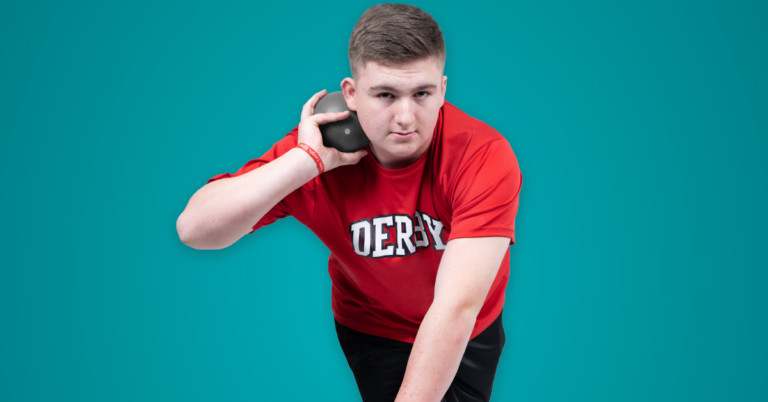At indoor track practice this past winter, Derby High School shot putter Michael Hyder, age 15, was hit in the back of the head with a shot put – a metal ball about the size and weight of a small cannonball. It knocked him unconscious, and he fell face-forward onto the gravel. When he came to about a minute later, he was dazed. An ambulance rushed him to a nearby trauma center. Miraculously, the CAT scan showed no skull fracture or brain bleeds. “I’d read stories about athletes getting hit in the head with a shot put, and none of them had a positive ending – until Michael,” says mom Tara.
The medical team had barely finished cleaning the gravel from Michael’s eyes and mouth when he asked how soon he could get back to practice.
“I’m going to throw at NVLs,” Michael told the doctor. The Naugatuck Valley League meet, three weeks away, was his chance to qualify for the state championship.
The doctor shook his head. The season was probably over, he told Michael. He had suffered a serious concussion.
But Michael was firm. “I’m going to make states,” he said.
